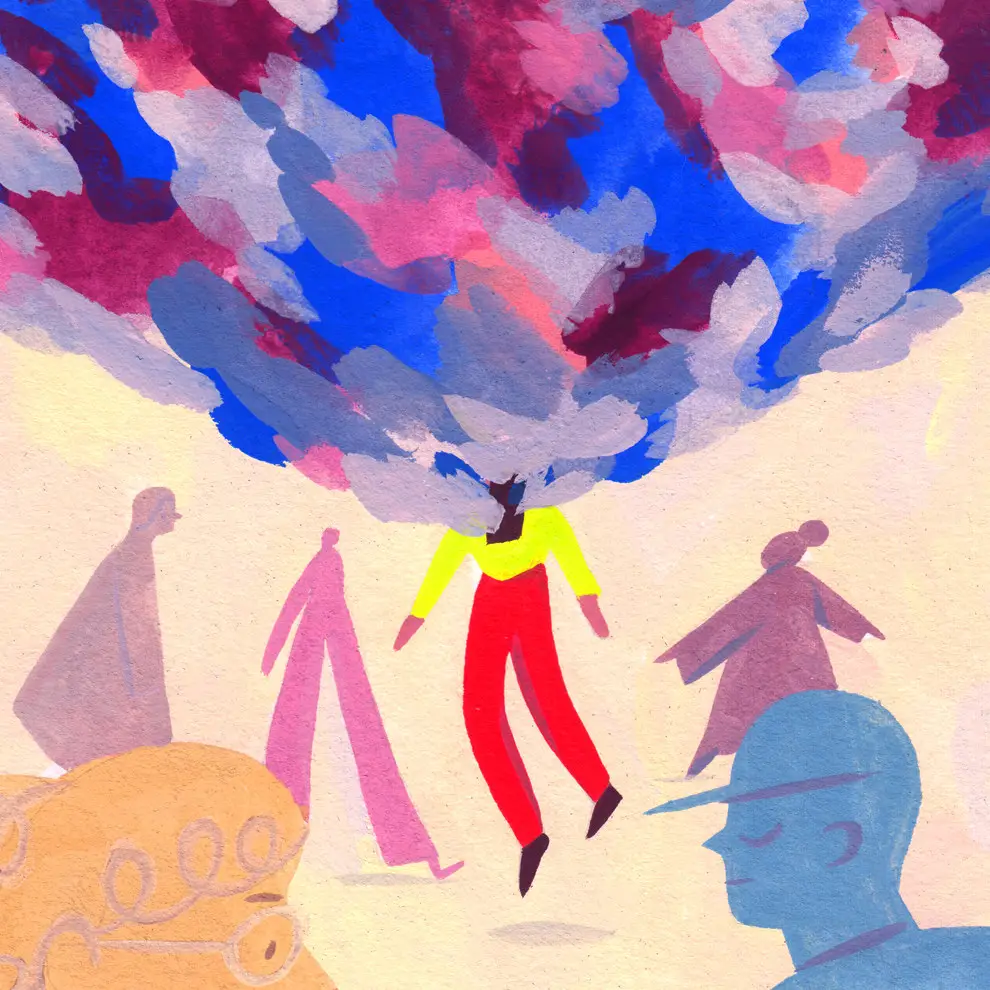Do you ever find yourself zoning out for long periods, without realizing it? If so, you may be suffering from daydreaming disorder. This condition can be very disruptive to your daily life, preventing you from completing tasks or achieving goals. In this blog post, we will discuss what daydreaming disorder is, and how you can deal with it effectively.
Contents
What Is Daydreaming Disorder?

Daydreaming disorder, also known as maladaptive daydreaming is a condition characterized by excessive daydreaming.
This can include fantasizing about future events, reliving past experiences, or simply letting your mind wander.
People with the daydreaming disorder may find it difficult to focus on tasks or conversations and may space out for long periods. People with this disorder may completely disassociate from reality and completely absorb their minds in their made-up alternate reality.
On average, an individual with MD may spend about 4.5 hours every day being distracted by their daydreams. They are also more likely to involve themes of violence, power, control, sex, captivity, rescue, and escape scenarios.
Symptoms Of Daydreaming Disorder
It is a rather tricky task to differentiate between regular daydreaming symptoms and knowing when it has the danger to become a disorder. The frequency and intensity of these symptoms should be tracked to ensure it is not an obstacle or a potential threat to becoming a disorder.
- Inability to focus on tasks or conversations
- Spacing out for long periods
- Excessive daydreaming about future events, reliving past experiences, or letting your mind wander
- Elaborating on stories and plot-lines
- Aids like music, movies, or fan fiction to further enhance the simulation of daydreams
- Find it difficult to control your daydreams
- Losing sleep over daydreams/fantasies
- Loss of control over the time spent daydreaming
- Restlessness in the brain
- Unconscious facial expressions, repetitive body movements, or talking or whispering that accompany daydreams
- Use of real-life stimuli and events to drift into imagination
- Withdrawal symptoms like irritability and anger when one can’t daydream
- Your daydreams interfere with your daily life
Causes Of Daydreaming Disorder

There is no known cause of the daydreaming disorder. However, there are various theories and researches which attempt to explain the possible explanations for this condition.
- According to research, MD could also be categorized as either a dissociative disorder, a disturbance of attention, a behavioral addiction, or an obsessive-compulsive spectrum disorder.
- For those who have suffered excessive childhood trauma, daydreaming often became a defense/escape mechanism. This may further carry onto adulthood if not monitored.
- Excessive daydreaming often becomes a way to cope with shame, guilt, or a desire to regain control or authority. Living in an alternate reality makes people believe that they have a right to write their destiny and also undo their wrongdoings.
- For people who do not feel satisfied with the events of their current life, daydreaming becomes an outlet for imagining an ideal self/life/future that provides a further escape from the true reality. This form of escapism can also be very quick to make an individual lose the sense of codependency and healthy boundaries.
Diagnosing Daydreaming Disorder
A diagnosis of daydreaming disorder can only be made by a mental health professional. This is because many of the symptoms of the daydreaming disorder are also common in other conditions, such as ADHD, anxiety disorders, and depression.
To diagnose the daydreaming disorder, your mental health professional will likely ask you about your symptoms and how they have impacted your life. They may also ask you to keep a journal of your daydreams for some time.
Maladaptive Daydreaming Scale
This is the most commonly used measure of daydreaming severity. It consists of 26 items, each rated on a scale from 0 (never) to 100 (always). The items cover:
- Content, quality, and vividness of daydreams
- Ability to control, stop, interrupt or redirect attention to something else
- Amount of distress caused by maladaptive daydreams
- Perceived benefits, enjoyment, or satisfaction a person gets from daydreams
- The extent that which daydreaming interferes with daily tasks, routines, and responsibilities
Consequences Of Daydreaming Disorder

If left untreated, daydreaming disorder can lead to several problems. These include:
- Isolation and social withdrawal
- Poor academic or work performance
- Problems with relationships
- Boredom
- Increased irritability
- Strong feelings of denial
- Loss of motivation
- Impulsivity
- Difficulty concentrating
In addition, it can also result in various clinical disorders such as:
- Anxiety
- Depression
- Obsessive-compulsive disorder (OCD)
- Attention-deficit/hyperactivity disorder (ADHD)
- Schizophrenia
How to Deal With Daydreaming Disorder
There is no one-size-fits-all treatment for daydreaming disorder. However, there are several ways that people with daydreaming disorder can learn to manage their symptoms and live productive lives.
Self Help Tips
- Identify the triggers for your daydreaming. These may be certain times of day, situations, or emotions. Once you know what triggers your daydreaming, you can try to avoid these trigger points. If that is not possible, try to distract yourself with something else when you start to feel the urge to daydream. For example, you could be listening to music or reading a book.
- Keep a journal. This will help you to track your thoughts as well as patterns of daydreaming.
- You should also try to find ways to reduce stress in your life, as stress can trigger excessive daydreaming, which further leads to it becoming an unhealthy coping mechanism.
- Sleep deprivation can also worsen symptoms of daydreaming disorder. Make sure to get enough rest each night.
- Exercise also helps improve concentration and focus.
- Practicing meditation or mindfulness can also help you learn to control your thoughts and focus on the present moment.
Therapy
If your symptoms are severe, you may want to consult with a mental health professional who can help you develop coping strategies.
Cognitive-behavioral therapy (CBT) is a type of therapy that can be effective in treating the daydreaming disorder. CBT also helps people learn to identify as well as change their negative thought patterns and behaviors.
Therapists also teach you various grounding techniques to stay in touch with reality, as well as be realistic with their ways of dealing.
Medication
Moreover, prescribed medication like antidepressants or antipsychotics is also recommended to soothe and improve the symptoms which entail this disorder.
Disclaimer: Medication should be taken only with a professional’s advice with close supervision to deal with side effects and measure the efficacy.
Conclusion
Daydreaming disorder is a condition that is often misunderstood. It can be difficult to cope with, but there are ways to manage the symptoms and live a productive life. If you think you may have daydreaming disorder, talk to a mental health professional about your symptoms as well as treatment options.
If you are looking for affordable Online OCD Counseling MantraCare can help: Book a trial OCD therapy session


